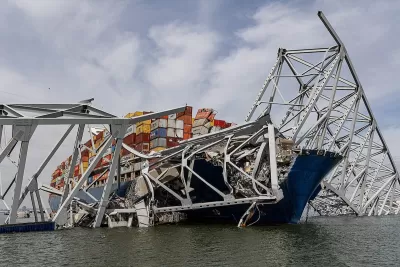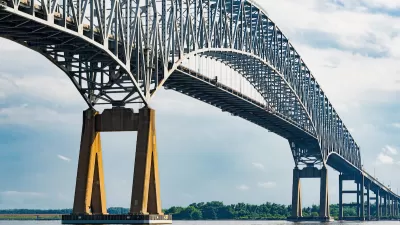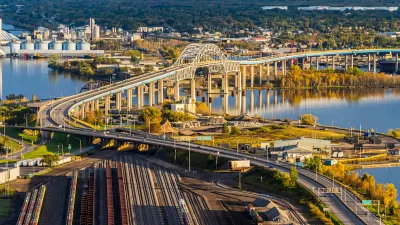The loss of a key route to the Port of Baltimore is causing major delays and long detours on alternate routes.

Baltimore-area residents are still feeling the impacts of the March collapse of the Francis Scott Key Bridge, which, when open, carried more than 34,000 vehicles including over 3,000 commercial trucks per day.
In a piece for The Baltimore Banner, April Quevedo writes, “Trucks carrying hazardous materials that used the bridge to cross the harbor are now forced to go around the Beltway in the opposite direction (a 35-mile detour) due to cargo restrictions through Baltimore City traffic tunnels — though not all hazmat vehicle operators adhere to commodity restrictions.”
An analysis of traffic accident and congestion data reveals that “Baltimore-area traffic congestion along certain corridors of major highways has increased by at least 25% since the collapse of the Key Bridge,” with tunnels bearing the brunt of the impact. Northbound travel times in the Baltimore Harbor and Fort McHenry tunnels are up by 100 percent and 200 percent.
A representative from the MDTA told Capital News Service the agency “continues to ‘monitor commute times along the alternative routes, adjust signal timing when appropriate, and clear crashes from travel lanes as quickly as possible to mitigate congestion.’”
FULL STORY: Gridlock: Baltimore-area drivers continue to feel the impact of the Key Bridge collapse

Planetizen Federal Action Tracker
A weekly monitor of how Trump’s orders and actions are impacting planners and planning in America.

Congressman Proposes Bill to Rename DC Metro “Trump Train”
The Make Autorail Great Again Act would withhold federal funding to the system until the Washington Metropolitan Area Transit Authority (WMATA), rebrands as the Washington Metropolitan Authority for Greater Access (WMAGA).

The Simple Legislative Tool Transforming Vacant Downtowns
In California, Michigan and Georgia, an easy win is bringing dollars — and delight — back to city centers.

The States Losing Rural Delivery Rooms at an Alarming Pace
In some states, as few as 9% of rural hospitals still deliver babies. As a result, rising pre-term births, no adequate pre-term care and harrowing close calls are a growing reality.

The Small South Asian Republic Going all in on EVs
Thanks to one simple policy change less than five years ago, 65% of new cars in this Himalayan country are now electric.

DC Backpedals on Bike Lane Protection, Swaps Barriers for Paint
Citing aesthetic concerns, the city is removing the concrete barriers and flexposts that once separated Arizona Avenue cyclists from motor vehicles.
Urban Design for Planners 1: Software Tools
This six-course series explores essential urban design concepts using open source software and equips planners with the tools they need to participate fully in the urban design process.
Planning for Universal Design
Learn the tools for implementing Universal Design in planning regulations.
Smith Gee Studio
City of Charlotte
City of Camden Redevelopment Agency
City of Astoria
Transportation Research & Education Center (TREC) at Portland State University
US High Speed Rail Association
City of Camden Redevelopment Agency
Municipality of Princeton (NJ)





























